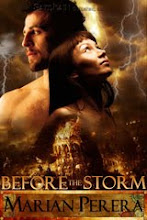
A new world often needs new animals. I like playing Diablo II partly because of the creatures that populate its landscapes – giant scarabs, goatmen, pulsating maggot eggs half-buried in the ground, foul crows emerging with a fluid pop from their great organic nests, like yeast cells budding off. Such animals make a land both recognizable and strange, and are fun to come up with as well. Here are some of the methods I use to do this.
1. Evolve existing animals
I recommend Dougal Dixon’s books for ideas on how modern animals can develop into extremely bizarre and yet believable creatures. Check out After Man : A Zoology of the Future and The New Dinosaurs. Evolving existing animals is easy to do – just imagine altered conditions, put your animal in them, and change the animal to enable it to survive and breed.
For instance, let’s put an eagle in the desert. Eagles would find it difficult to hunt there – the heat during the day would be intense, especially if they were flying for long periods of time, and prey would be scarce, meaning that they would be expending a lot of energy for little reward. You could change that by allowing the eagles to see in the dark. Or if you wanted to go even further, give the eagles the ability to teleport at high altitude, meaning they could cover vast amounts of land to search for prey. And they grow silver feathers along the backs of their wings and spines to reflect sunlight (rather than absorbing it). Of course, this means that they’re hunted by desert tribes… and when the eagles descend to grab prey, they can’t teleport.
2. Splice existing animals
There are a lot of these in role-playing games. Fighting Fantasy has skunkbears, Dungeons and Dragons has owlbears. Mate the two and you could get a skunkowl. I haven’t done that (yet), but I’ve had winged serpents. As long as this isn’t the method used to create every animal in the story, and as long as the creatures aren’t too bizarre – I’ve come across cat-dogs in published novels, and I wouldn’t buy them – this can work adequately.
3. Make ordinary animals sentient or magically skilled
Philip Pullman’s The Golden Compass has armored polar bears, which sound fascinating even before he gets into the details of their culture and their behavior. The same thing could be done with any animal. What if herds of wild mustangs occasionally produced a blue horse, which had the power to open portals into another dimension? What if snakes had the ability to see the future and communicate it to people – if they wished to do so? If the story was set in ancient Greece, you could have a Python at Delphi.
4. Turn ordinary objects or phenomena into animals
Harry Harrison’s novels of the Yilane - West of Eden, Winter in Eden and Return to Eden - used animals to substitute for whatever technology the Yilane required. Need a depilatory to remove hair from the face? A sluglike creature crawls over the skin and digests keratin. Need a blowpipe? A long-bodied animal with a hollow interior produces a gas that could propel a dart – sort of a modified bombardier beetle. This is a lot of fun because whatever you come up with is very likely to be original.
5. Think outside the box
Fantasy animals don’t need to have eyes or limbs or skin or brains in the conventional sense. Wayne Barlowe’s Expedition is a great example of this – none of the animals of Darwin IV have eyes or jaws, and most of them look very different from anything on Earth. What if there was a creature that looked like an amorphous slimy mass, but which could change its appearance to mirror whomever it encountered, on the principle that people are less likely to attack something which looks exactly like them? Or a gestalt entity that was made up of hundreds or thousands of smaller organisms? Its overall shape would depend on its component creatures, and could change depending on where they/it was.
Have fun with zoology!












